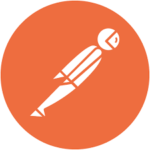Software quality assurance (SQA) systematically
finds patterns and the actions needed to improve
development cycles. Finding and fixing coding errors
can carry unintended consequences; it is possible
to fix one thing, yet break other features and functionality
at the same time.
SQA has become important for developers as a
means of avoiding errors before they occur, saving
development time and expenses. Even with SQA processes
in place, an update to software can break other
features and cause defects — commonly known as bugs.
There have been numerous SQA strategies. For
example, Capability Maturity Model Integration (CMMI)
is a performance improvement-focused SQA model.
CMMI works by ranking maturity levels of areas within
an organization, and it identifies optimizations
that can be used for improvement. Rank levels range
from being disorganized to being fully optimal.
Software development methodologies have developed
over time that rely on SQA, such as Waterfall, Agile
and Scrum. Each development process seeks to optimize
work efficiency.
- Waterfall is the traditional
linear approach to software development. It's
a step-by-step process that typically involves
gathering requirements, formalizing a design,
implementing code, code testing and remediation
and release. It is often seen as too slow, which
is why alternative development methods were
constructed.
- Agile is a team-oriented
software development methodology where each
step in the work process is approached as a
sprint. Agile software development is highly
adaptive, but it is less predictive because
the scope of the project can easily change.
- Scrum is a combination
of both processes where developers are split
into teams to handle specific tasks, and each
task is separated into multiple sprints.
To implement a QA system, first set goals for
the standard. Consider the advantages and tradeoffs
of each approach, such as maximizing efficacy, reducing
cost or minimizing errors. Management must be willing
to implement process changes and to work together
to support the QA system and establish standards
for quality.
🔄
Integrated QA
Quality assurance built into every SDLC phase for robust, reliable applications from inception to deployment.
- Agile testing methodologies
- Continuous integration pipelines
- Shift-left testing approach
🔍
Independent Validation
Third-party testing services for unbiased quality assessment.
- Legacy system evaluation
- Pre-release verification
- Regulatory compliance testing
📊
Quality Engineering
Systematic processes to improve development cycles and prevent defects.
- CMMI maturity assessments
- Process optimization
- Quality metrics analysis
In today's fast-paced digital world, delivering
high-quality software swiftly is paramount. Automation
testing is the key to achieving this, providing
rapid, reliable, and repeatable test results that
manual testing simply cannot match. At NESTech,
we specialize in comprehensive automation testing
solutions that empower businesses to accelerate
their development cycles while ensuring superior
product quality.
UI Automation Testing
- Requirement Analysis - Understand user flows
- Tool Selection - Selenium, Cypress, Playwright
- Environment Setup - Configure test beds
- Element Identification - Locate UI components
- Script Development - Create reusable tests
- Execution - Cross-browser/OS testing
- Visual Validation - Verify responsive designs
API Automation Testing
- Requirements Analysis - API specifications
- Environment Setup - Servers & test data
- Tool Selection - Postman, RestAssured
- Test Case Design - Success/failure scenarios
- Script Development - Endpoint validation
- Execution - Automated test runs
- Reporting - Detailed analytics
Manual testing is a critical step in the
software development process that ensures high-quality
products. It involves executing tests manually
to identify defects, errors, or bugs in the
software.
You get to evaluate user experience, user
interface, and functional aspects of the software.
In today's world, there is a wide range of software
testing solutions available to help with manual
testing. These solutions offer different levels
of support, from simple test case management
to complex test automation. But manual testing
remains an important aspect of software development
that cannot be replaced by automation alone.
Manual Testing is one of the most fundamental
testing processes as it can find both visible
and hidden defects of the software. The difference
between expected output and output, given by
the software, is defined as a defect. The developer
fixed the defects and handed it to the tester
for retesting.
Manual testing is mandatory for every newly
developed software before automated testing.
This testing requires great efforts and time,
but it gives the surety of bug-free software.
Manual Testing requires knowledge of manual
testing techniques but not of any automated
testing tool.
Manual testing is essential because one of
the software testing fundamentals is "100% automation
is not possible."
Our Manual Testing Methodology
Comprehensive analysis of project specifications to build effective test strategies.
- Document review and clarification
- Test scenario identification
- Risk assessment
Creating a roadmap for systematic quality validation.
- Defining test objectives
- Selecting testing techniques
- Environment planning
Detailed instructions for validating all functional aspects.
- Step-by-step validation procedures
- Expected vs actual results
- Edge case scenarios











